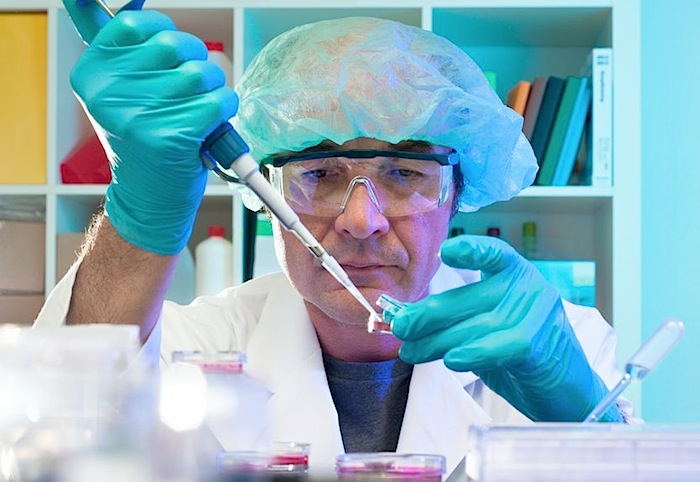New Study Renews Roundup 'Weedkiller' Toxicity Concern
January 19th 2014
By: Sayer Ji, Founder

A new study published in the January issue of International Journal of Toxicology titled, "Glyphosate Commercial Formulation Causes Cytotoxicity, Oxidative Effects, and Apoptosis on Human Cells: Differences With its Active Ingredient, " raises renewed concern that formulations of the world's most popular herbicide glyphosate (e.g. Roundup), used primarily in the production of GM food, represent a serious human health threat.
Researchers studied the effects of a glyphosate-based formulation on human cells, at dilutions far below agricultural applications. The researchers discovered that while glyphosate and its amino acid metabolite, aminomethylphosphonic acid (AMPA), showed little to no observable toxic effects in isolation, a glyphosate-based formulation containing adjuvants produced a variety of adverse effects on cellular oxidative balance, including the following signs of oxidative stress:
- Increases in reactive oxygen species
- Increases in nitrotyrosine formation
- Increases in superoxide dismutase activity
- Increases in glutathione levels
The glyphosate formulation studied also triggered two 'death proteins' in human cells known as caspase 3/7, inducing pathways that activate programmed cell death (apoptosis), a clear sign of significant toxicity.
Most importantly, the researchers concluded: "These results confirm that G [glyphosate] formulations have adjuvants working together with the active ingredient and causing toxic effects that are not seen with acid glyphosate."
Discussion
This study reveals an important biosafety issue when it comes to the widespread use of glyphosate-based agrichemicals in our food and environment, namely, an ingredient like glyphosate may not reveal its inherent toxicity in isolation, and that toxicological risk assessments performed on these chemicals do not take into account the reality of synergistic toxicity, i.e. the total adverse effects often far exceed the sum of the individual components being evaluated.
We addressed this issue previously in our article "Research: Roundup Herbicide Toxicity Vastly Underestimated ," where we reported on a 2012 study published in the journal Archives of Toxicology that revealed the glyphosate formulation known as Roundup is toxic to human DNA in dilutions 450-fold lower than used in agricultural applications.[i] This finding could not be anticipated from the known toxicological effects of glyphosate alone. The likely explanation is that the surfactant polyoxyethyleneamine within Roundup dramatically enhances the absorption of glyphosate into exposed human cells and tissue.
Another related study, published in the journal Toxicology in 2011, titled, "Ethoxylated adjuvants of glyphosate-based herbicides are active principles of human cell toxicity ," found 24 hour exposures on liver, embryonic and placental cell lines at concentrations as low as 1 ppm – a dose well within "acceptable" environmental and occupational doses – resulted in negative effects on cellular respiration and membrane integrity.[ii]
The authors struck to the heart of the issue by concluding:
"Altogether, these results challenge the establishment of guidance values such as the acceptable daily intake of glyphosate, when these are mostly based on a long term in vivo test of glyphosate alone. Since pesticides are always used with adjuvants that could change their toxicity, the necessity to assess their whole formulations as mixtures becomes obvious. This challenges the concept of active principle of pesticides for non-target species."
The issue with glyphosate and/or glyphosate formulations doing grave harm to the human body and the environment is at the crux of the argument that GM foods, many of which were bioengineered to be exposed and contaminated with glyphosate, should be at the very least labeled, and perhaps altogether banned. We encourage our readers to examine our argument that the extreme toxicity of Roundup destroys the argument that GM and non-GM food are substantially equivalent . The 'substantial equivalency' argument underpins the regulatory approval of glyphosate-resistant crops. Without it, most of the GM foods being consumed today would not have been released into the human food supply without proper safety testing.
We also believe this latest study, while seemingly minimizing the toxicological issue with glyphosate in isolation by finding it is not directly cytotoxic within the experimental conditions tested, needs to be balanced out with recent findings that glyphosate in isolation has extreme carcinogenic potential, having been shown to disrupt and/or mimic estrogen at concentrations as low as the parts-per-trillion range . This disturbing finding also calls into question the most basic tenet of conventional toxicology: that the lower the concentration of a toxic chemical to which one is exposed the lower the risk for adverse health effects. To the contrary, in some cases, a lower concentration results in greater endocrine disruption and resultant harm.
For additional research on the harms associated with agrichemicals like glyphosate , glyphosate formulations and/or Roundup herbicide , click these hyperlinks. Also, we have a resource on GreenMedInfo.com that aggregates both the first hand biomedical citations, as well as our articles reporting on the research: Health Guide: GMO Research .
Please consider becoming a member of GreenMedInfo.com to support our work: check out the Friend membership package .
REFERENCES
[i] Verena J Koller, Maria Fürhacker, Armen Nersesyan, Miroslav Mišík, Maria Eisenbauer, Siegfried Knasmueller. Cytotoxic and DNA-damaging properties of glyphosate and Roundup in human-derived buccal epithelial cells. Arch Toxicol. 2012 Feb 14. Epub 2012 Feb 14. PMID: 22331240
[ii] R Mesnage, B Bernay, G-E Séralini. Ethoxylated adjuvants of glyphosate-based herbicides are active principles of human cell toxicity. Toxicology. 2012 Sep 21. Epub 2012 Sep 21. PMID:23000283